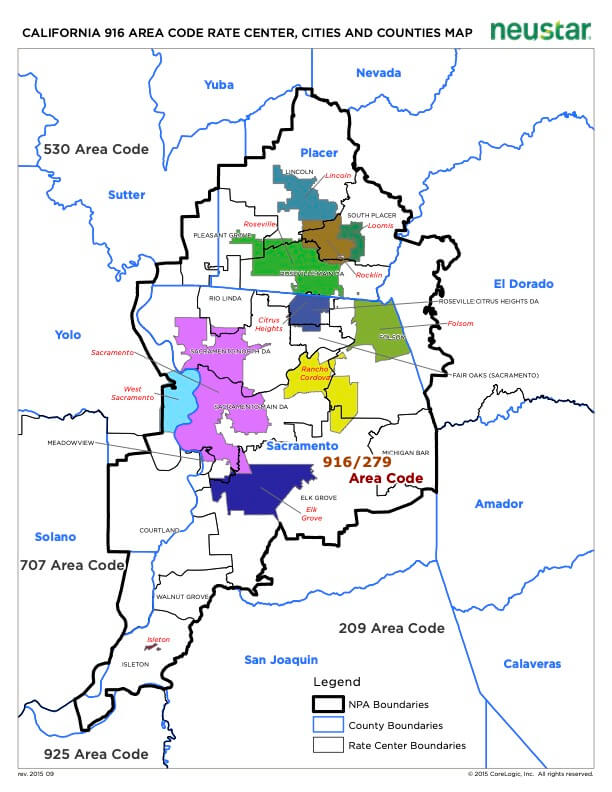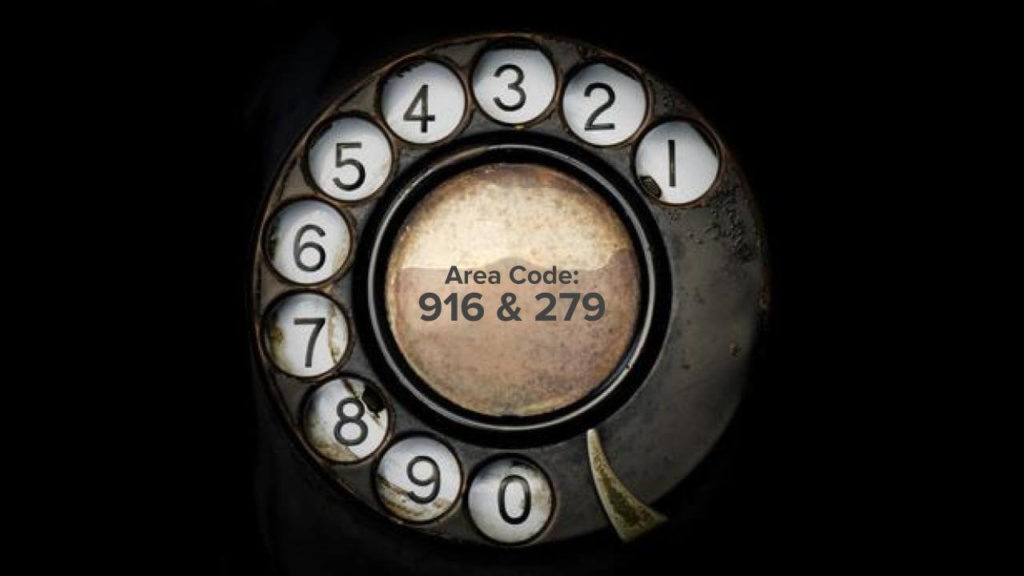The 916 area code was one of California’s original three area codes when area codes were introduced to the United States and Canada in 1947 as part of the North American Numbering Plan (NANP).
The other two California area codes introduced that year were 415 and 213.
The 916 area code in northern California initially bordered Oregon. It included Eureka and the north coast but did not include the Sacramento area.
916 is the only initial area code that does not include any of its original territory today.
History of the Middle ‘1’
American states and Canadian provinces that were only assigned one area code for the entire state or province had a ‘0’ in the middle of the assigned area code.
States and provinces with more than one area code assigned to them had a ‘1’ in the middle of each area code. California included 916, 415, and 213.
Because rotary dialing of larger numbers was laborious, low numbers like 213 minimized the duration of ‘pulls’ on a rotary dial and were assigned to highly populated areas.
Area Code 916 Location and Time Zone
The 916 area code serves the greater Sacramento region, which includes parts of El Dorado, Solano, Sutter, Yolo, Placer, and Sacramento counties.
916 serves various Northern California cities, including Sacramento, West Sacramento, Rancho Cordova, Elk Grove, Citrus Heights, Rocklin, Roseville, Fair Oaks, Folsom, and El Dorado Hills.
This bolded black border on this map shows the numbering plan area (NPA) coverage boundary for 916.

Area code 916 is in the Pacific Time Zone (PT) of the United States. The IANA reference is ‘America/Los_Angeles.’
Pacific Standard Time is 8 hours behind UTC (Coordinated Universal Time).
Pacific Daylight Time (PDT) — between the second Sunday in March and the first Sunday in November — is offset from UTC by minus 7 hours.
Here is the current date and time in the 916 area code.
The 279 Overlay
The California Public Utilities Commission (CPUC) forecasted that the 916 area code would use all its available prefixes by the first quarter of 2018. Therefore, the CPUC approved and introduced a new 279 area code in September 2017.
Unlike an area code split, an overlay meant that no phone numbers with 916 area codes were converted to 279.
Because of the overlay, as of September 2017, all calls made within the current 916 service area needed to start with 916. Dialing only seven digits resulted in an intercept message.
Landlines also require a ‘1’ to be dialed before the area code. Mobile carriers typically do not need a 1.
There were several implications to the new ten or eleven-digit dialing requirement for businesses, their customers, and consumers within the area code. These are common to any area code overlay.
If a telephone’s preprogrammed speed dial numbers within the 916 area code were stored as seven digits (e.g., 555-2368), they had to be changed to 916-555-2368, for example.
For any call forwarding pointing to a seven-digit number within 916, the 916 area code had to be pre-pended to the forwarding string.
If a burglar alarm was programmed to dial a local seven-digit number rather than a toll-free number, the alarm had to be reprogrammed to dial this sequence:
| Country code | 1 |
| Area code | 916 |
| Telephone prefix, a.k.a central office code or exchange code (example) | 555 |
| Line number (example) | 2368 |
CBS Sacramento reported on this at the time.
For point-of-entry devices programmed to dial seven digits, 1 + 916 had to be added.
An area code overlay like 279 took some getting used to for all involved.
The significant change in habit is that all phone numbers, even area code 916, must be dialed using ten or eleven digits.


